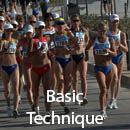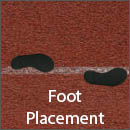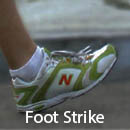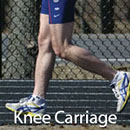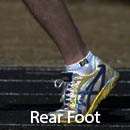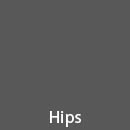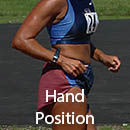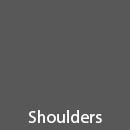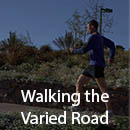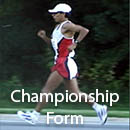Race Walking Technique
Championship Form
The following pictures are from the 10K Nationals in Niagra Falls, NY. Special thanks goes to Dave Lawrence for getting a golf cart to allow these pictures to be taken.
The camera taking these pictures records at 30 frames per second. This is faster than a normal camera. Each figure is 1/15th of a second apart, or two frames. The only exception to this is figure 4a, which is 1/30th of a second from figure 4 & 5. I did this to illustrate a point in Figure 4a.

Figure 1

Figure 2

Figure 3

Figure 4

Figure 4a

Figure 5

Figure 6

Figure 7

Figure 8

Figure 9

Figure 10

Figure 10
- Figure 1
-
The start of the stride shows Perez just before contact with the swing leg. Notice that he has a slight flight phase, but this can only be detected in one frame and is not noticeable to the human eye. Therefore, he is legal. Notice his posture is straight up and down, there is no lean forward from the ankles. His arms are held at slightly less than a 90 degree angle (Depending upon the ration of the lengths of the parts of your arms, your ideal may not be the same as Perez). Notice his forward foot will strike the ground with approximately 40% of his stride in front of his body and 60% behind. (View stick figures for a clearer diagram).
-
Figure 2
-
Taken at heel strike, one can clearly see again that there is no forward lean from the ankles. All other comments are as in Figure 1.
-
Figure 3
-
The supporting leg is in the vertical position. The angle that the arms make has remained constant. The body is in a straight up and down position. The swing leg is moving forward with the foot barely off the ground.
-
Figure 4
-
The swing leg is coming forward. The back leg is still straight. (Your ideal may also vary as to the point the rear leg should bend), Arm angle is still constant. The body is still straight up and down, even thou it may look like it is leaning forward because of the optical illusion of the rear leg.
-
Figure 4a
-
This picture is 1 frame after Figure 4 and 1 before Figure 5. The primary reason for adding it is to show the forward foot of the swing leg in a near parallel position with respect to the ground.
-
Figure 5
-
At near double support phase from the other side, we can see how effectively Perez makes use of his hips. They are not simply swiveling around his body, but he reaches forward with them in order to extend his stride and provide power in his stride.
-
Figure 6 - Figure 10
-
These are repetitions of the figures before, just from the other side.

